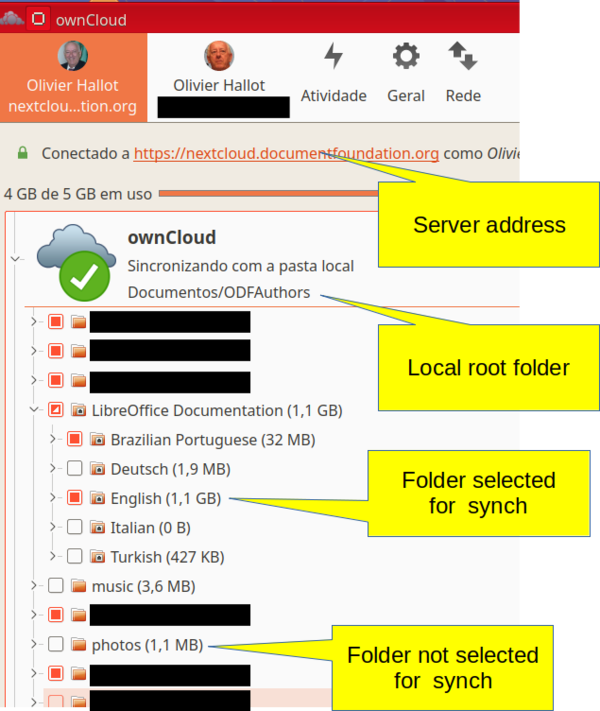Documentation/NextcloudClient
TDF LibreOffice Document Liberation Project Community Blogs Weblate Nextcloud Redmine Ask LibreOffice Donate
Foreword
The Document Foundation is now using NextCloud to store files used to produce the guides and other documentation works. We show how to setup the NextCloud client application in a computer and how to make an intelligent synchronization with a local folder.
Pros and cons of using NextCloud Client for collaborative work
| Pros | Cons |
|---|---|
| Automatic synchronization is done silently in the background. | Like any shared folder, all actions on its contents are propagated to everyone else who synchronizes the same server folder. Extra care is needed when editing or deleting a file and folders, and if you edit and do frequent saves, exports and other file operations, all other users will receive notifications, which may be annoying to them. |
| When a conflict occurs (two users editing the same file), NextCloud saves copies of the contents on each client and does not merge it. | You must resolve the edit conflicts manually. |
| The user is not required to download and upload chapter and files to the NextCloud server with a browser. | Careless folder synchronization can generate high volumes of data transfer. Proceed to pick the right folders to synchronize. Avoid synchronizing data of no interest. |
| Everything is shared with the team. | Know what you synch in a shared folder. Private or sensitive information is not recommended. |
Download and install the NextCloud Client software
For Windows 7, 8, 10
Visit the NextCloud Clients page and download the Windows installer.
Double-click the installation file to start.
For Linux
The best way for Linux is to download and install directly from your distribution software channel.
If not feasible, then visit the NextCloud Clients page and download the Linux appimage. Proceed to install the AppImage from your distribution.
For macOS
Visit the NextCloud Clients page and download the macOS installer.
Setting up the NextCloud Client software
Intelligent synchronization
Careless synchronization can start a massive data flow between your computer and the Foundation server. Not every folder in the server need to be synchronized.
Open the NextCloud Control panel and select the folders to synchronize. Mark and unmark the corresponding checkboxes in the server folder tree as shown below.

Tips and warnings on synchronization
- Synchronization is a slow process because it depends on the internet.
- As data go back and forth in the internet, the whole process may take seconds or even minutes.
- Synchronization is triggered each time the file in your local hard drive is changed; in other words, the file is synchronized each time you save it.
- Wait some seconds to ensure the synch process has finished before shutting down or suspending your computer.
- The software has visual indicator (icon) in the computer system tray. Watch synchronization actions there.
- Although the software is robust and can recover most of the unfinished synchronization (including network outages), better not challenge it.